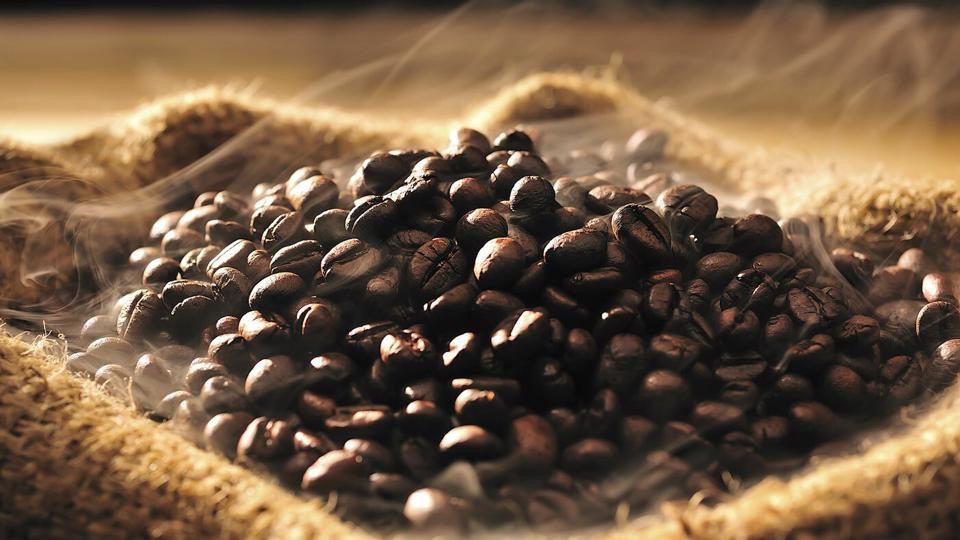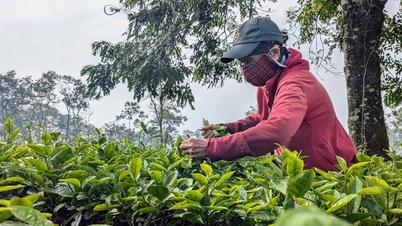Global coffee prices, which have risen sharply on both the London and New York derivatives exchanges, are said to be due to concerns about supply shortages starting to "seep in". In addition, the continued decline of the USD due to concerns about the US economic recession has stimulated general purchasing power for commodities. ICE inventories on both derivatives exchanges continue to fall to historic lows.
Robusta coffee inventories certified and monitored by the London Exchange, as of August 25, decreased by another 4,560 tons, or 11.80% compared to the previous week, to 34,080 tons (about 568,000 bags, 60 kg bags), continuing to fall to the lowest level since 2016.
Furthermore, the increase in the Real exchange rate against the USD has supported coffee prices in the domestic Brazilian market to increase across all commercial centers.
 |
| Domestic coffee prices today, August 31, increased sharply by 700 - 800 VND/kg in key purchasing localities. (Source: Kitco) |
At the end of the trading session on August 30 on the international futures exchange, the price of robusta coffee on the ICE Futures Europe London exchange for November 2023 delivery increased by 47 USD, trading at 2,496 USD/ton. The January 2024 delivery increased by 25 USD, trading at 2,370 USD/ton. Average trading volume.
Arabica coffee prices on the ICE Futures US New York exchange for December 2023 delivery increased sharply by 2.25 cents, trading at 155.35 cents/lb. Meanwhile, the March 2024 delivery increased by 2.15 cents, trading at 156.35 cents/lb. Average trading volume.
Domestic coffee prices today, August 31, increased sharply by 700 - 800 VND/kg in key purchasing localities.
Unit: VND/kg. (Source: Giacaphe.com) |
Reports of somewhat negative US economic growth indicators have reduced Wall Street investors' concerns that the US Federal Reserve (Fed) will tighten monetary policy at its upcoming meeting, supporting the bull market.
Meanwhile, according to a report by BMI Research Unit of Financial Analysis Company Fitch Solutions, not only Vietnam and Indonesia, but also Robusta coffee from Brazil - the three largest Robusta coffee producing countries in the world - have been negatively affected by drought.
Recently, the General Statistics Office of Vietnam showed that in August, Vietnam is estimated to have exported about 90 thousand tons of coffee, down 20.57% compared to the same period last year, bringing coffee exports in the first 8 months of this year to a total of 1.2 million tons, down 4.9% compared to the same period last year.
The widely anticipated El Nino transition in the coming quarters has raised concerns about lower yields in the world’s largest suppliers, BMI said. Across Southeast Asia, El Nino is associated with below-average rainfall and higher temperatures, both of which reduce coffee production.
The US Department of Agriculture (USDA) predicts that global robusta coffee production will decrease by about one-fifth.
Meanwhile, according to the latest report of the International Coffee Organization (ICO), world coffee consumption is expected to exceed supply by 7.3 million bags this crop year, up from a deficit of 7.1 million bags in the previous crop year.
Source



![[Photo] General Secretary To Lam chairs a working session with the Central Internal Affairs Commission](https://vphoto.vietnam.vn/thumb/1200x675/vietnam/resource/IMAGE/2025/5/22/3b7790f499da45b2803d8ae253207ef1)


![[Photo] Prime Minister Pham Minh Chinh chairs the Government's special meeting on law-making in May](https://vphoto.vietnam.vn/thumb/1200x675/vietnam/resource/IMAGE/2025/5/22/1c880aae96fd4e0894abc47a46fe19ba)















































































![[Podcast] Week introducing more than 500 OCOP products in Hanoi](https://vphoto.vietnam.vn/thumb/402x226/vietnam/resource/IMAGE/2025/5/22/d144aac2416744718388dbae3260e7fd)







Comment (0)